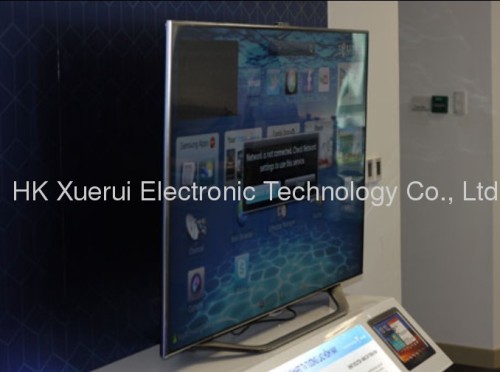

The product is currently targeted for Q1 2011 availability as a notebook product.
#SAMSUNG 3DTV 2D TO 3D CONVERSION 1080P#
A prototype Vaio used a combination of hardware (graphics card) and software (both in prototype development stage) to convert 1080p MPEG4 video to full HD 3D (2*1080p), the equivalent of the Blu-ray 3D standard.
#SAMSUNG 3DTV 2D TO 3D CONVERSION TV#
Having said that Sony’s TV people were not discussing “in-set” conversion, around the corner the company’s Vaio group had probably the most impressive real-time 2D-3D conversion I have yet seen. However the 3D effect, while obvious, lacked any great depth. Toshiba also demonstrated “standard” 2D-3D conversion, which was less problematic although mild “ghosting” effects were visible. It was certainly a long way from matching the Blu-ray 3D experience. To my own eyes this was not too impressive, with artefacts clearly visible in the upscaled version, even if the overall effect from a distance was greater sharpness. The demonstration offered side-by-side comparison of otherwise identical content. These included one which claimed to offer conversion of “regular” 3D TV broadcasts to “full” 3D. Toshiba was the major firm least backward in coming forward with in-set 2D-3D conversion, offering a number of demonstrations open to public view. Of course, because Toshiba continues to push its Cell processor technology as a platform for real-time rendering and upscaling of 2D to 3D content. The major exception to this was of course Toshiba. I got the strong sense that staff on many stands were tired of deflecting questions about 2D-3D and that their lives would have been made slightly less tedious if demonstrations had been available. Panasonic’s representative was open in admitting that the company was behind in devlopment of in-set 2D-3D conversion technologies, and only included it as a feature “because everyone else was”. Other 3DTV sets around the stand could be switched to 3D conversion but staff were unable to supply glasses so that the effect could be appreciated. The only real time 2D-3D conversion demonstration featured games material. Samsung’s stand also featured a large number of 3DTV demonstrations, all of which featured 3D-originated content of one sort or another. But when asked to demonstrate this functionality we were informed it was not possible on the show floor. Sony came close to giving the game away: the information board behind a line of 3DTVs noted the fact that any 2D content could be converted to 3D “by pushing a button on the remote control”.

As various Sony, Panasonic and Samsung representatives explained, to one degree or another “in-set” 2D-3D conversion was not yet considered “good enough” to warrant live demonstrations to the German technology-buying public or indeed the rest of the industry. Which makes it all the more strange that most of IFA’s big names were extremely reluctant to promote the ability of their 3DTVs to turn bog standard 2D into 3D content, on the fly and with no additional hardware required. Nevertheless, it was clear from duplicate and triplicate demonstrations of the same 3D animated movies and football games that the dearth of 3D-originated content remains 3DTV’s biggest challenge. Watching the 3D story unfold at IFA also served as a nice hors-d’oeuvres to this weekend’s IBC in Amsterdam, when you can learn more about industry and consumer adoption of 3D at our Analyst Forum: it’s not too late to register at Given that internet TV, or connected TV, or “smart TV”, depending on your preferred nomenclature, has been at least a decade in the making, perhaps it is inevitable that it seems to be making faster progress towards mass market adoption than 3DTV, which, in spite of decades-old visions, has really only begun to gather speed in the last year or two. By contrast, the many 3D-enabled TVs seemed starved of suitable material with which to show off their capabilities. The plethora of new connected TVs on display from every major manufacturer seemed barely able to cope with the variety of Internet and managed content and applications available. This year’s IFA nicely summed up the opposing challenges facing the next wave of TV technologies.


 0 kommentar(er)
0 kommentar(er)
